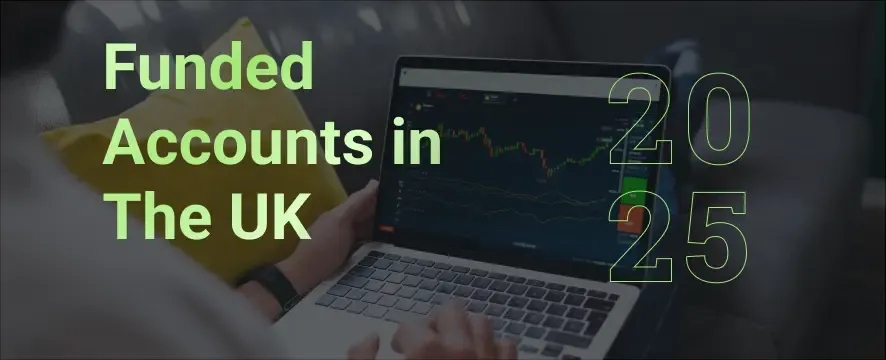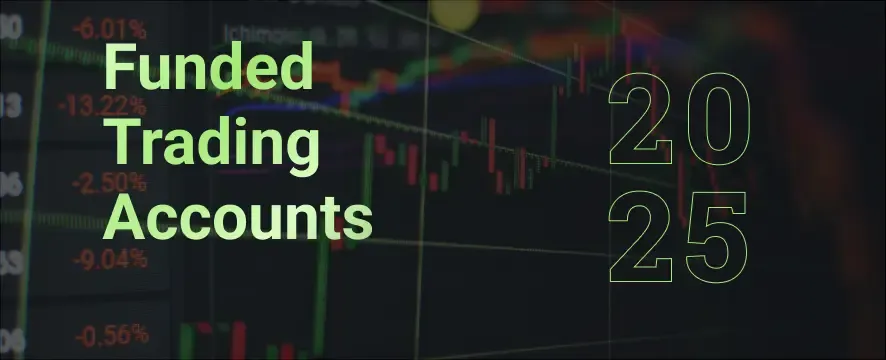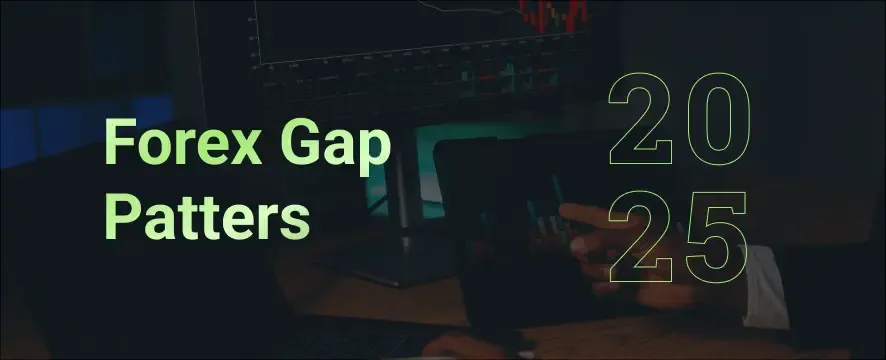10 min read
Share
The forex market is highly volatile, yet this volatility presents both dangers and opportunities for prepared forex traders.

Forex market volatility - characterized by sudden, dramatic price swings of hundreds of pips within minutes can rapidly turn calm markets chaotic.
However, volatility isn't just an abstract concept in currency markets; it's the very essence of what creates both danger and opportunity for traders worldwide. Every price fluctuation represents potential profit or loss, depending on how well you understand and respond to it.
What Drives Forex Volatility in Currency Markets?
The forex market processes over $6 trillion in daily transactions. This massive volume of transactions creates a constantly shifting landscape where prices rarely stay stable for long.
Market sentiment drives much of this movement. When traders feel uncertain, volatility typically increases. Fear and greed – the common market emotions translate directly into sharp price movements that can catch traders off guard.
Economic news releases also act as volatility catalysts. A surprise inflation report or unexpected central bank announcement can send currency pairs soaring or plunging within seconds. These scheduled events typically appear on economic calendars, but their market impact often exceeds expectations.
Central banks themselves are major volatility drivers. For example, when the European Central Bank or Federal Reserve signals policy shifts, currencies respond dramatically. Likewise, interest rate decisions directly impact currency values and can trigger notable volatility across currency pairs.
Currency Fluctuations: The Double-Edged Sword
High volatility presents both opportunities and risks. For experienced and skilled forex traders, volatile periods offer greater profit potential than subdued markets. Big price swings during volatile markets create trading opportunities that simply don't exist during flat market conditions.
However, highly volatile markets also bring increased risk. Volatile markets can trigger stop losses faster and create slippage that affects trading performance. What looks like a promising setup can transform into a losing position within minutes.
Currency pairs differ dramatically in their typical volatility levels. Major pairs like EUR/USD are generally more stable than exotic pairs involving emerging market currencies like the Indian Rupee or Brazilian Real.
Understanding these differences can help you select appropriate pairs for your risk tolerance.
Forex Volatility Indicators Every Trader Should Master
Successful traders don't guess about volatility – they measure and track it. There are several technical indicators specifically designed to quantify market volatility and give traders crucial insight into the prevailing market conditions.
Average True Range (ATR)
The Average True Range indicator is perhaps the most straightforward and useful volatility measurement tool. It calculates the average range between high and low prices over a specified period – typically 14 days.
ATR doesn't predict direction – instead, it quantifies volatility in absolute terms. Higher ATR readings indicate more volatile market conditions, while lower readings suggest calmer price action. This information proves valuable when setting stop losses or profit targets.
Average True Range (ATR) adapts to changing market dynamics automatically. During volatile periods, the indicator rises to reflect the larger price swings. As markets calm, ATR gradually decreases. This responsiveness makes it particularly valuable during transitions between market states.
Many experienced traders size their positions based on ATR readings. In highly volatile markets, they reduce position sizes to maintain consistent risk exposure. This approach helps prevent outsized losses during unpredictable market phases.
Bollinger Bands
Bollinger Bands provide a visual representation of volatility directly on price charts. The indicator creates upper and lower bands based on moving averages and standard deviation calculations.
When volatility increases, these bands expand. When market volatility subsides, they contract. This visual feedback helps traders immediately recognize volatility shifts without using other indicators.
The distance between the upper and lower bands represents current volatility levels. Wide separation indicates highly volatile conditions, while narrow bands suggest a less volatile market environment. This information helps traders anticipate potential breakouts or continuations.
Some forex strategies specifically target the behavior of prices relative to these bands. Range trading approaches often look for the price to bounce between the upper and lower bands during periods of consistent volatility. Meanwhile, breakout strategies watch for prices pushing beyond the bands during volatility expansion.
Managing Volatility in Forex Trading
Understanding volatility is one thing, however managing it effectively requires specific risk management strategies tailored to current market conditions.
Position sizing is perhaps the most critical volatility management technique. In highly volatile markets, smaller positions reduce exposure, keeping potential losses manageable, regardless of how much prices swing.
Stop loss placement requires special attention during volatile periods. Wider stops accommodate the larger price swings without getting triggered by normal market noise. Many traders use ATR readings to determine appropriate stop distances – perhaps placing stops 1.5 or 2 times the current ATR away from entry.
Market liquidity also fluctuates alongside volatility. During extremely volatile conditions, liquidity often decreases as market makers step back. This reduction can worsen slippage and execution quality. Smart traders recognize these conditions and adjust their expectations accordingly.
Risk Management Strategies for Volatile Markets
Diversification provides natural protection against volatility spikes in specific currency pairs. By trading multiple uncorrelated pairs, traders ensure that volatility in one market doesn't threaten their entire account.
Risk-to-reward ratios may also require adjustment during highly volatile periods. The potential for larger price movements often justifies seeking bigger targets relative to stop distances. A 1:2 risk-reward ratio might expand to 1:3 or higher when volatility provides the opportunity for extended moves.
Leverage reduction represents perhaps the simplest volatility management approach. Lower leverage directly reduces exposure to price swings, and during particularly turbulent market phases, cutting leverage by half or more can preserve capital until conditions normalize.
Currency Pair Selection Based on Volatility Profiles
Not all currency pairs exhibit the same volatility characteristics. This difference creates natural matches between trader preferences and specific currency pairs.
Major pairs typically demonstrate moderate volatility profiles. EUR/USD — the most traded pair worldwide — generally shows less dramatic price swings than more exotic combinations. This relative stability makes it appropriate for beginners or those with lower risk tolerance.
Crosses involving the Japanese Yen often display increased volatility, particularly during Asian trading sessions. Pairs like GBP/JPY have earned nicknames like ‘the dragon’ for their sometimes wild behavior. These pairs attract traders specifically seeking volatility.
The Australian Dollar pairs frequently react strongly to commodity price changes and Chinese economic data.
Emerging market currencies usually have the highest volatility profiles. Pairs involving the Indian Rupee, Turkish Lira, or Brazilian Real can make dramatic moves based on local political instability or economic developments. These pairs offer tremendous opportunity alongside substantial risk.
How Market Conditions Affect Trading Decisions
It’s important to understand that volatility never remains constant. Markets cycle between periods of expansion and contraction, requiring adaptable trading approaches.
Range-bound markets typically develop during lower volatility phases. Prices oscillate between support and resistance levels without enough momentum to break out. These conditions favor range trading strategies that buy at support and sell at resistance.
Trending markets often coincide with moderate volatility. Prices move decisively in one direction while still maintaining reasonable predictability. Trend-following approaches work well in these conditions, using pullbacks as entry opportunities.
Choppy, directionless markets usually appear during transitions between volatility states. These challenging conditions often produce false signals.
Anticipating Volatility in the Forex Market
Proactive volatility management begins with anticipation. There are several approaches that can help traders prepare for volatility before it actually hits.
Economic calendars highlight scheduled news releases that typically generate volatility. Interest rate decisions, employment reports, and inflation data regularly create significant price movements. Planning trading activity around these events lets traders either avoid – or exploit anticipated volatility.
Technical consolidation patterns often precede volatility expansions. Triangles, rectangles, and other compression formations frequently break with explosive moves. Recognizing these patterns provides advanced warning of potential volatility increases.
Another point: certain months historically show higher average volatility than others. January often brings increased movement as new institutional money enters markets. Summer months (particularly August) frequently show reduced volatility as major players take vacations.
The Volatility Index (VIX) – though primarily associated with stock markets – can provide insight into broader market sentiment. When the VIX spikes, currency markets often also experience volatility increase. This correlation makes the index worth monitoring.
Global Events and Their Impact on Currency Volatility
Political instability creates market conditions that are often hard to predict beforehand. Elections, referendums, and civil unrest can all trigger dramatic currency movements. For example, the Brexit vote in 2016 created some of the most volatile conditions in GBP pairs in recent memory.
Central bank policy shifts also typically increase volatility. When the European Central Bank, Bank of Japan, or Federal Reserve changes interest rates or adjusts quantitative easing programs, markets usually respond with increased activity.
Natural disasters and unexpected crises also create volatility spikes through their economic impact. Major events like the 2011 Japanese tsunami or the 2020 pandemic onset triggered enormous volatility as markets priced in rapidly changing economic outlooks.
Lastly, war and conflict produce some of the most extreme volatility environments. Military actions or threats directly impact economic growth expectations and risk premiums. Currencies involved in or adjacent to conflicts typically experience dramatic fluctuations during periods of war - or even the threat of war.
Trading Opportunities Created by Volatility
Volatility isn't simply something to defend against — it creates specific trading opportunities for prepared traders. Here are some of the best ways to capitalize on volatility in the forex market.
Breakout strategies thrive during volatility expansions. When prices push beyond established ranges with increased momentum, these strategies capture the resulting moves. The biggest challenge lies in distinguishing genuine breakouts from false ones.
News trading approaches deliberately target high-volatility windows following major announcements. These strategies require rapid execution and comfort with uncertain conditions. Although risky, they can produce exceptional returns when properly managed.
Volatility-based indicators like Bollinger Bands create their own trading signals. Strategies like the Bollinger Band squeeze specifically look for periods of decreasing volatility (band contraction) that often precede explosive moves.
Mean reversion strategies work on the principle that extreme volatility eventually normalizes. When currency prices become significantly overextended during volatile periods, these strategies look for reversal opportunities as prices return toward averages.
Adapting to Tomorrow's Volatility Landscape
The forex market continues evolving, and volatility patterns are evolving alongside it. There are several trends that suggest a change in how traders will approach volatility in the coming years.
Algorithmic trading has fundamentally changed market reaction speeds. Volatility now develops and resolves faster than ever before as programs execute thousands of trades in milliseconds. Central bank policies have entered uncharted territory in recent years. Negative interest rates, massive quantitative easing programs, and unprecedented intervention create new volatility dynamics that didn't exist in previous decades. These institutional factors will continue shaping volatility patterns.
Notably, decentralized finance and digital currencies represent potential long-term shifts in the currency landscape. Their growing influence could create new correlations and volatility patterns as traditional and digital currency markets increasingly interact.
For forex traders, volatility will always remain both a challenge and an opportunity. Those who continue developing their understanding and management approaches will find themselves equipped for whatever market conditions develop.
After all, in currency trading, volatility isn't just a market condition – it's the very essence of what creates profit potential in the first place.
Also read

17 min read
Discover essential tips for selecting the right funded trader prop firm to match your trading goals. Read the article to find your perfect trading partner.

13 min read
Discover what a funded account is and how it can benefit UK traders in 2025. Get essential insights and tips to navigate your trading journey. Read more!

13 min read
Discover how funded trading accounts provide access to professional capital without financial risk. Read on to learn more and start your trading journey.

20 min read
Discover what a funded firm is and how prop trading companies operate. Gain insights into their benefits and challenges.

10 min read
What are weekend gap patterns in Forex, and how can they be exploited to make profit?
Join our community
Get an insight from other users about SeacrestFunded and their experiences. 131K+ members and counting
